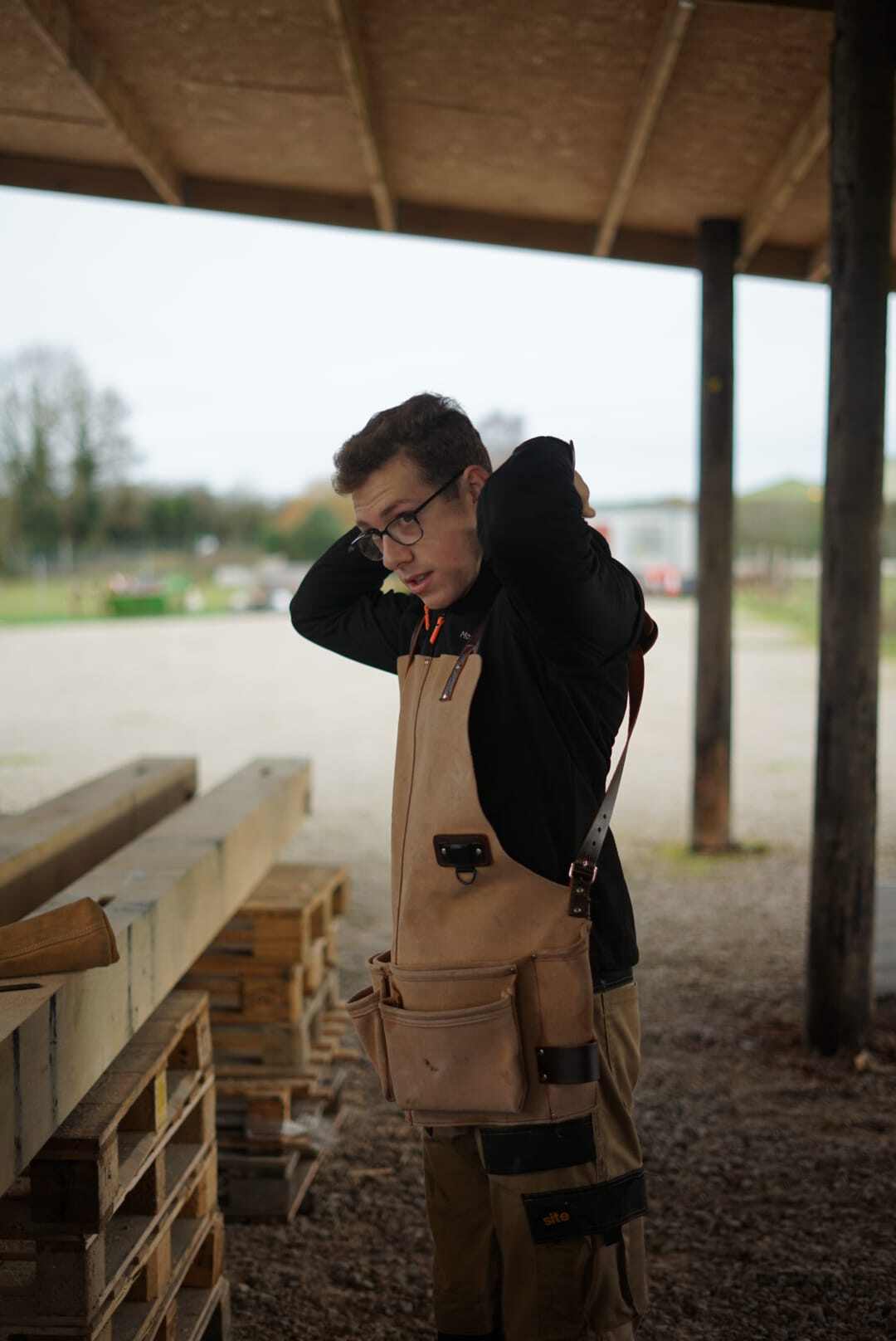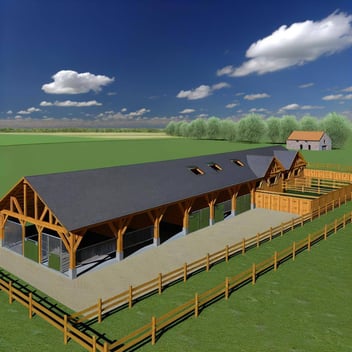When planning an equestrian facility, one of the key decisions you'll face is whether to build stables or a horse barn. Both options have their unique advantages and serve different purposes however the choice ultimately depends on your specific needs, budget, and long-term goals. In this blog, we'll explore the differences between stables and barns, providing detailed insights into the pros and cons of each to help you make the best decision.
What Are Stables?
Stables are specialized buildings designed primarily to house horses. They are typically composed of individual stalls, where each horse has its own space, and may include additional areas such as tack rooms, feed storage, areas for stocks, and wash bays. Stables are often the heart of an equestrian facility, providing a safe, comfortable, and organized environment for horses.
Pros of Stables:
- Horse-Centric Stable Design:
- Safety: Stables are specifically designed with horse safety in mind, featuring secure stalls, appropriate ventilation, and safe materials.
- Comfort: Horses have their own designated space, reducing the risk of injury and stress. The design also allows for easy monitoring of each horse's health and behavior.
- Organization:
- Efficient Management: With stables, everything from feed to tack is usually organized and easily accessible, which streamlines daily routines and care.
- Dedicated Spaces: Separate areas for grooming, feeding, and medical care keep the facility clean and functional.
- Socialization Control:
- Managing Interactions: Stables allow you to manage the interactions between horses, which is especially important if you have horses with differing temperaments or special needs.
- Reducing Stress: Horses can enjoy their own space, minimizing stress from being in close quarters with others.
- Climate Control:
- Ventilation: Proper ventilation in stables helps maintain a healthy environment, reducing the risk of respiratory issues.
- Temperature Regulation: Stables can be designed to protect horses from extreme weather conditions, providing warmth in winter and coolness in summer.
Cons of Stables:
- Cost:
- Higher Initial Investment: Building a stable can be expensive, especially when you factor in the costs of individual stalls, ventilation systems, and other specialized features.
- Maintenance Costs: Regular maintenance is required to keep the stables in good condition, which can add to long-term expenses.
- Space Requirements:
- Land Use: Stables require a significant amount of space, both for the building itself and for surrounding areas like paddocks and exercise yards.
- Expansion Limitations: If you plan to grow your facility, expanding a stable can be more complex and costly compared to other structures.
- Limited Versatility:
- Specific Use: Stables are designed specifically for housing horses, offering limited flexibility for other uses. If your needs change, it may be challenging to re-purpose or develop the space.
What Are Barns?
Horse barns are much more versatile and structures that can serve multiple purposes beyond housing horses. In addition to stables, barns can be used for storing feed, equipment, hay, and even as workshops or spaces for other livestock. Barns often combine functionality with flexibility, making them a popular choice for multi-purpose equestrian facilities.
Pros of Barns:
- Versatility:
- Multi-Use Space: Barns can be adapted for various uses, from housing horses to storing hay, equipment, and even vehicles. This makes them a practical choice for owners with diverse needs.
- Easier Repurposing: If your needs change over time, barns can be more easily repurposed for different functions compared to stables.
- Cost-Effective:
- Lower Initial Costs: Building a barn may be less expensive than constructing a stable, particularly if you're using the space for multiple purposes.
- Consolidated Space: By combining stables with storage and other facilities, barns can reduce the need for multiple structures, saving on construction and maintenance costs.
- Space Efficiency:
- Consolidated Layout: Barns often feature a more compact layout, which can be advantageous if you're working with limited land.
- Integrated Storage: Having feed, equipment, and other supplies in the same building as the horses simplifies management and daily routines.
- Flexibility in Design:
- Customisable Layout: Barns offer flexibility in design, allowing you to create a layout that suits your specific needs, whether that includes open spaces, lofts, or specialized areas.
- Future Expansion: Barns can be more easily expanded or modified, providing room to grow as your needs evolve.
Cons of Barns:
- Less Horse-Centric:
- General Design: While barns can be adapted to house horses, they may not offer the same level of comfort and safety as purpose-built stables. Features like ventilation and stall design might require additional customization.
- Potential Overcrowding: Combining different functions in one space can lead to overcrowding, which might stress the horses or create management challenges.
- Climate Control Challenges:
- Ventilation Issues: If not properly designed, barns can suffer from poor ventilation, leading to issues like excess moisture or dust buildup, which can affect horse health.
- Temperature Extremes: Barns may be more difficult to insulate or climate-control effectively, depending on their design and the range of activities they accommodate.
- Aesthetic and Practical Concerns:
- Rustic Appearance: While some appreciate the traditional, rustic look of a barn, others might find it less appealing compared to the clean lines and tailored appearance of a stable.
- Maintenance Complexity: Managing a multi-purpose barn may require more effort, particularly in keeping areas clean and organized for different uses.
Making the Right Choice: Stables or Barn?
Choosing between a stable and a barn ultimately comes down to your specific needs, preferences, and future plans. Here are some considerations to help you decide:
- Primary Use: If your primary focus is on providing the best environment for your horses, with dedicated spaces and specialized features, a stable may be the better choice. However, if you need a more versatile space that can accommodate multiple functions, a barn might be the way to go.
- Budget: Consider both the initial construction costs and long-term maintenance when making your decision. While stables may require a higher upfront investment, they offer tailored solutions for horse care. Barns, on the other hand, can be more cost-effective if you need to consolidate various activities under one roof.
- Future Growth: Think about your long-term plans. If you anticipate expanding your facility or diversifying its use, a barn offers more flexibility for future modifications.
- Space and Location: Evaluate your available land and how each structure will fit within it. Stables require more space for horses and related activities, while barns offer a more compact, all-in-one solution.


 Back
Back
 August 16, 2024
August 16, 2024  5 min read
5 min read

.png)


.png?width=352&name=Green%20Modern%20Discussion%20Topic%20Youtube%20Thumbnail%20(1).png)